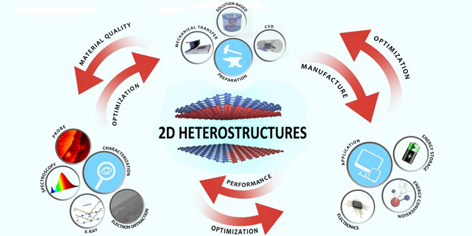
Graphene and other two-dimensional materials (2DMs) have attracted intensive interests for energy storage and conversion systems because of their unique structure and remarkable properties. Although significant progress has been made in this field, certain intrinsic limitations obstruct the achievement of desired properties. 2D heterostructures, upon stacking or stitching different 2DMs in well-defined sequence or patterns could significantly entail drastic changes in their properties, and thereby synergistically combine the merits of individual 2DMs while eliminating their related drawbacks. Herein, we provide a topical review of the recent advances in preparation and characterization of 2D heterostructures for energy-related applications. Firstly, an introduction is given to the definition and importance of 2D heterostructures, followed by their typical categories of vertically stacked heterostructures and horizontal in-plane heterostructures reported so far. Secondly, the state-of-the-art synthesis approaches to fabricate 2D heterostructures, including mechanically aligned transfer, chemical vapor deposition, liquid exfoliation and self-assembly, and layer by layer self-assembly, are introduced in detail. Then, the current status of advanced characterization techniques like scanning probe-, electron-diffraction-, X-ray-, and spectroscopy-based techniques that are critical for the accurate identification of 2D heterostructures and understanding of the performance-enhancing mechanisms of devices are systemically summarized. Furthermore, recent applications of 2D heterostructures in energy storage (e.g., lithium/sodium ion batteries, lithium sulfur batteries, supercapacitors, micro-supercapacitors) and conversion (e.g., hydrogen/oxygen evolution reactions, photocatalysis), are exemplified to highlight their positive synergistic effect. Finally, the future challenges and prospective solutions that may direct the growth of 2D heterostructures and their energy-related applications are proposed.